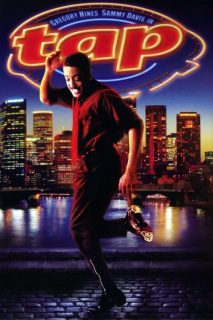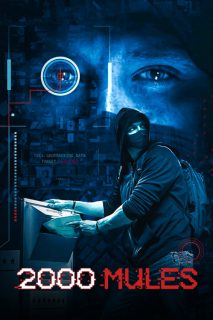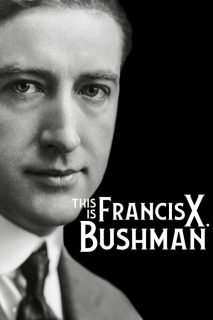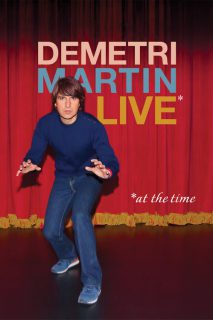
- Year: 2005
- Released: 27 Sep 2005
- Country: United Kingdom, United States, Japan
- Adwords: Won 1 Primetime Emmy. 9 wins & 8 nominations total
- IMDb: https://www.imdb.com/title/tt0367555/
- Rotten Tomatoes: https://www.rottentomatoes.com/m/american_masters_no_direction_home_bob_dylan
- Metacritics:
- Available in: 480p,
- Language: English
- MPA Rating: Not Rated
- Genre: Documentary, Biography, Music
- Runtime: 208 min
- Writer: N/A
- Director: Martin Scorsese
- Cast: Bob Dylan, B.J. Rolfzen, Dick Kangas
- Keywords: performance folk rock,
 | 8.4/10 |
American Masters No Direction Home: Bob Dylan Storyline
Portrait of an artist as a young man. Roughly chronological, using archival footage intercut with recent interviews, a story takes shape of Bob Dylan’s (b. 1941) coming of age from 1961 to 1966 as a singer, songwriter, performer, and star. He takes from others: singing styles, chord changes, and rare records. He keeps moving: on stage, around New York City and on tour, from Suze Rotolo to Joan Baez and on, from songs of topical witness to songs of raucous independence, from folk to rock. He drops the past. He refuses, usually with humor and charm, to be simplified, classified, categorized, or finalized: always becoming, we see a shapeshifter on a journey with no direction home.—
American Masters No Direction Home: Bob Dylan Photos



American Masters No Direction Home: Bob Dylan Torrents Download
| 480p | bluray | 842.57 MB | magnet:?xt=urn:btih:8894692EBD015873F39A710062BB8A04BDF45719 |
American Masters No Direction Home: Bob Dylan Subtitles Download
American Masters No Direction Home: Bob Dylan Movie Reviews
Best rock movie in years…
I really don’t know what to say after viewing Martin Scorsese’s mesmerizing three-hour+ made for PBS film except that I am truly impressed. And although it is more of a chronicle of an era (the early 1960’s and what lead to Dylan’s fame) then a biography of Bob Dylan I was surprised that I enjoyed it as much as I did. At first I was skeptical, I thought it had pretensions of grandeur: Dylan/and Scorsese? I mean come on guys!? But the piece delivered. It was cut in such a way that seemed to create drama out of raw material. Although ponderous at times the film not only held my interest but made me want to find out more about Bob Dylan, the NYC folk scene, Pete, Seger, Woody Guthrie, Allen Ginsberg, Liam Clancy, Joan Baez and many others. The interviews were fascinating, humorous and sometimes truly educational. There is a purpose and a true sense of that time to the film that is unlike most other “rock” documentaries. In one of my favorite interviews in the film Bob Neuwirth explains how in the early 60’s money (financial success) was not an issue when it came to the arts. Back then it was about if an artist had something to say. Weather it was Bob Dylan or Ornette Coleman what people would ask was “does he (the artist) have something to say.” Money and the “bottom line” didn’t enter into the equation. It was a whole different world back then. Neuwirth states this so glibly that you’ll wish you had a time-machine to go back and check it out for yourself. I have at least one friend who was disappointed in the film. He felt that it didn’t illuminate the life of Dylan enough in that it ends in 1966 with him being “booed” offstage for “going electric.” But apparently this is all Dylan wanted to reveal for this film. He (and his people) gave Martin Scorsese specific instructions to only chronicle this period. Scorsese was asked to sort through hours of material (including 10-hours of recent Dylan interviews). The result is amazing considering these limitations. Instead of illuminating the Dylan myth the film uses “myth” to stir a powerful narrative, one that rivals many of Scosese’s latest cinematic endeavors. Perhaps another director would have tried to create something more definitive regarding the details of Dylans life and songwriting process but Scorsese has always favored myth over reality in him films. And in the case of No Direction Home I believe he mixes together the perfect combination of myth, mystery and reality. Sure there are great Dylan performances throughout the feature but they are tied together by a larger narrative which is the journey of an artist (at a particular stage in his life). Some of the highlights for me musically and otherwise were Dylan at the Newport Folk Festival where he has trouble tuning his guitar but still comes off as some sort of “folk messiah” to the folkies present ( was that scene even real?! ), Al Kooper talking about how he came up for the organ part for Like a Rolling Stone (hilarious). Dylan performing (if only snippets of, sigh ) “Masters of War,” and his “Hard Rain” and the final performance of the film (Like a Rolling Stone) when Dylan summons his band (the Band) to “play it f*ck#ng loud!” in order offset the hecklers booing his electric set in England in 1966. Ironically I recently read a quote from Jim Jarmusch talking about NYC in the late 1970’s, he said, “I feel so lucky. During the late 70’s in New York, anything seemed possible. You could make a movie or a record and work part time, and you could find an apartment for 160 bucks a month. And the conversations were about ideas. No one was talking about money. It was pretty amazing. But looking back is dangerous. I don’t like nostalgia. But, still, damn, it was fun. I’m glad I was there.” Be it the early 1960’s or the late 1970’s perhaps the charm and “myth” of such an era inspired Dylan and company to chronicle only his “golden era” as opposed to trying to trace his entire career ( which could have proved to be less then fruitful ). Instead we get a wonderful slice of life about a great time in American History, about a great artist and put together on film by a great filmmaker. I’m not going to complain.
Bob Dylan, human being
In our age of universal celebrity, where we know everything that everyone famous thinks (or, more usually, does not think), it’s refreshing to rediscover how interesting it can be to hear from someone whose achievements are great but who rarely speaks about them. Bob Dylan has given an extensive interview to Martin Scorcese for Scorcese’s film about his emergence from the folk scene and his subsequent “betrayal” of that scene when he went electric: it’s absorbing to watch, although, in the end, Bob doesn’t actually say that much specific. However, the interview is complemented by a selection of other distinguished talking heads and most crucially, a rich selection of archive footage, going back to Dylan’s very first days as a performer. What one notices is just how young he was: the depth and sophistication of even his earliest music can blind one, listening on record, to the age of the performer producing it. He also comes across as playful, self-confident and quite naturally baffled by some of idiocy going on around him: far from seeming incomprehensibly moody, Dylan actually appears as sane as anyone could be at the centre of such attention. It’s the music, though, that is really the key to this film, with a rawness and edge, as well as a cleverness, that is still unsurpassed today (and this comment applies equally to the acoustic and the electric material). Since 1966 when the film ends, Dylan has continued to tour and write occasionally great songs; but the body of work that he produced in the early to mid 1960s stands clear for its amazing quantity and quality. If nothing else, ‘No Direction Home’ stands as clear testament to that achievement.
Good insight into Dylan’s life
Having been a casual listener of Bob Dylan, I found this documentary rather insightful and well-made. Narrated by Dylan, director Martin Scorsese basically interviews friends, colleagues and family of Dylan (as well as Dylan himself) and gets to the roots of his inspiration and upbringing.
As I said above, I’m not a huge fan of Dylan insofar that I’d be able to tell you all of his songs, albums, etc. Some of my personal favorites are “Like a Rolling Stone,” “The Man in Me” and of course “Knockin’ On Heaven’s Door.” The film’s soundtrack uses Dylan songs which is a nice addition as well. It’s four hours long and when screened on TV comes in two parts, so you may have to see it in two viewings. But I found out a lot about Dylan that I didn’t know before and I think that’s the point.
Well-made, well-documented.



